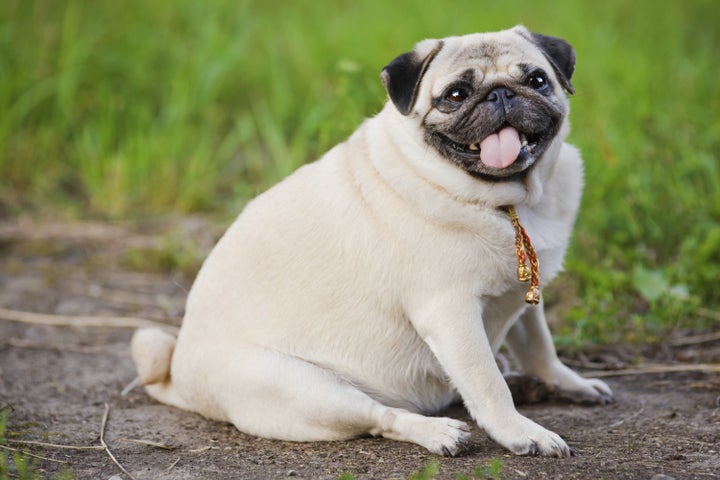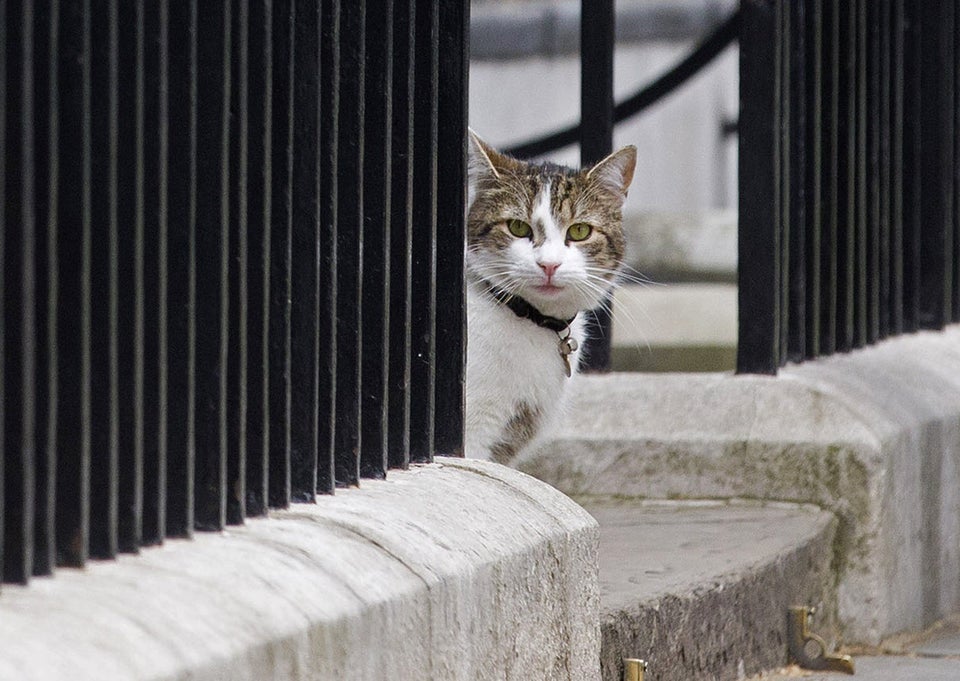While a lot of people may think chubby cats and dogs look adorable, obesity is a real health problem for many pets in the United States.
On Tuesday, veterinary clinic chain Banfield Pet Hospital released their annual report on the “state of pet health,” based on data from the 2.5 million dogs and 505,000 cats treated by the chain of more than 950 clinics. This year’s report includes a special focus on overweight pets, and the company compiled a list of the states with the highest percentages of obese and overweight pets.
Minnesota topped the list for heaviest pets.
“More than 20 disease conditions have been linked with pets being overweight,” Banfield veterinary research associate Kirk Breuninger told Minnesota’s KARE 11 news station. He added that while some people might think a “pudgy” pet looks cute, extra weight can exacerbate other health problems.

There are eight states that do not have Banfield clinics ― Alaska, Hawaii, Maine, North Dakota, South Dakota, Vermont, West Virginia and Wyoming ― so it’s unclear how those states would have fit into the list if they had been included. It’s also important to note that this data only came from pets whose owners brought them to Banfield veterinary clinics. A few states have 10 or fewer clinic locations, so the data from those states may not be as comprehensive as in others.
Based on the information Banfield provided to HuffPost, these are the 10 states with the highest proportions of overweight dogs and cats.
States with the fattest dogs
Minnesota: 41 percent
Nebraska: 39 percent
Michigan: 38 percent
Idaho: 38 percent
Nevada: 36 percent
New Mexico: 34 percent
Washington: 34 percent
Utah: 34 percent
Indiana: 34 percent
Oregon: 34 percent
States with the fattest cats
Minnesota: 46 percent
Nebraska: 43 percent
Iowa: 42 percent
Idaho: 40 percent
Delaware: 39 percent
Michigan: 39 percent
Nevada: 38 percent
Kansas: 38 percent
Utah: 37 percent
New Mexico: 37 percent
In the United States overall, 33 percent of cats and 30 percent of dogs seen by Banfield clinics were unhealthily heavy. Those findings are lower than figures cited by the Association for Pet Obesity Prevention, which estimates that 59 percent of cats and 54 percent of dogs in the U.S. are overweight or obese.
You might think that states with the most overweight people might also have the most overweight pets, but you’d be wrong.
For instance, four states that are among the top six when it comes to the highest rates of human obesity — Louisiana, Alabama, Arkansas and Mississippi — were in the bottom six when it came to overweight pets.
Banfield researchers weren’t totally sure why these states had lower rates of overweight pets, but they do have a theory — parasites. Intestinal parasites make it more difficult for pets to keep on weight, and the survey found that states with lower rates of pet obesity had higher rates of parasites, Breuninger told HuffPost. (He also stressed that he was by no means saying parasites are a good thing, as they cause “a number of health problems beyond an inability to readily put on weight.”)

Breuninger explained to The Washington Post that many pet owners don’t even realize their beloved furry friend is overweight. A veterinarian can help you determine if your pet has a weight issue, as well as assist you in putting together a diet or exercise plan.
Banfield also provides a guide that includes visual cues that your pet may be too heavy. For a typical cat or dog, you should be able to see their waist and feel their ribs. However, if you can see their ribs, that suggests the animal is underweight.
Feeding your pet the right number of calories is crucial, and a vet can help you determine what that number should be. But it’s also important to get your pet moving. For dogs, that might mean going for a walk or throwing a ball around, and for cats it can mean playing with interactive toys they can chase.
Food puzzles, or toys that require pets to solve a puzzle to access food, can also help animals slow down while eating. (Just make sure to choose a puzzle that’s appropriate for your pet’s ability level.) Research by cat behaviorists last year suggests that food puzzles can even make cats happier, offering mental stimulation and satisfying a need that cats — who are natural hunters — have to “work” for their food.
This article has been updated to include a comparison of states’ rates of obesity in pets with obesity in people.
